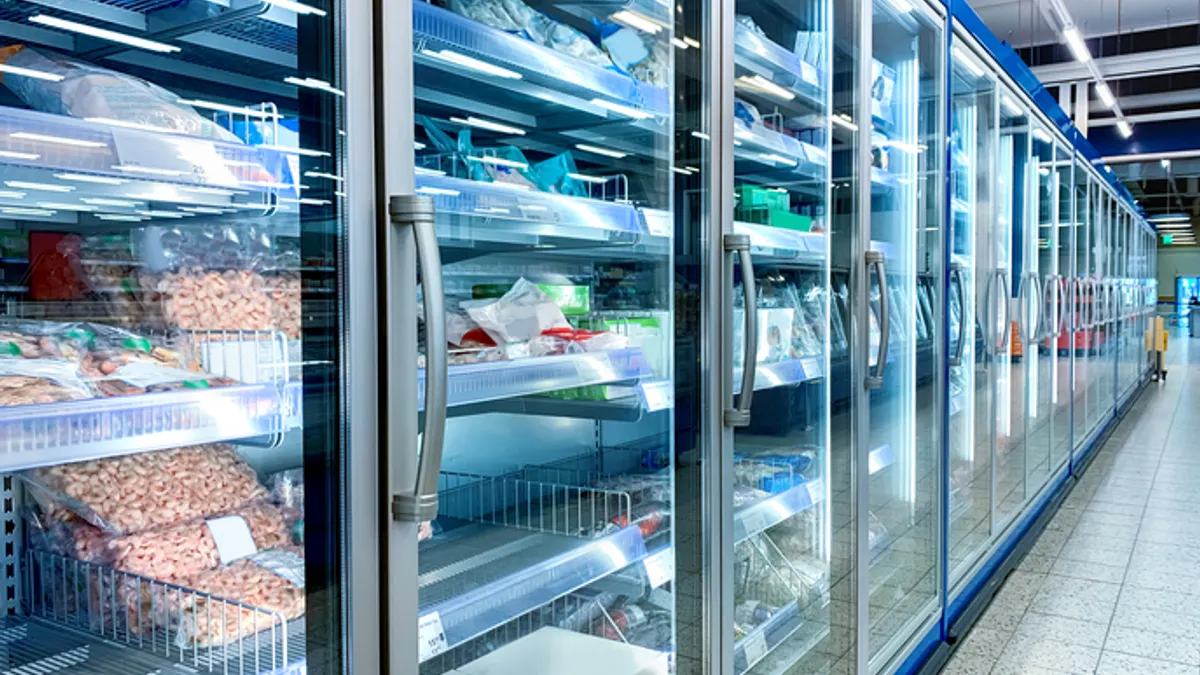Dive Brief:
- Inefficient commercial refrigerators and freezers will hit markets and add to facilities' energy costs because of resolutions the House and Senate have passed and that President Trump is expected to sign, the American Council for an Energy-Efficient Economy says.
- The U.S. Senate on May 1 passed a resolution, S.J. Res. 44, overturning a Department of Energy rule requiring commercial refrigerators and freezers to meet updated Energy Star standards. Manufacturers are largely on board with the rules, supporters say. The agency wrote them with industry input and manufacturers have retooled their operations to meet the standards and are already selling compliant appliances. The concern is that manufacturers that haven’t committed to the standards will have the go-ahead to sell cheaper, inefficient appliances that will cost facilities more over the long-term in increased energy costs.
- “Some large foreign factories could tweak and redirect products they make today for countries with weak or even non-existent standards to the U.S. market,” Andrew deLaski, executive director of the Appliance Standards Awareness Project, said in a blog post. “That's a quick way to take advantage of a non-enforcement policy. Domestic manufacturers could be the ones most disadvantaged if rule-breaking is welcomed.”
Dive Insight:
DOE released the standards in January. Appliances made in compliance with them cost more than those that don’t, but, for facilities that purchase them, the higher costs will be offset by energy savings in 3.5 years, supporters say.
“Savings on electricity bills will far exceed any increase in upfront costs,” says a fact sheet produced by the Appliance Standards Awareness Project.
Sen. Ashley Moody, R-Fla., the Senate resolution sponsor, called this and other energy-efficiency standards a legacy of the Biden administration that will hurt manufacturers in the long-term.
“If this regulation were allowed to remain on the books, Biden’s short-sighted, harmful energy standard would force commercial fridge and freezer manufacturers to discontinue product lines and close factories in the U.S.,” she said in floor remarks the day before the vote on the resolution.
Among other things, the standards require refrigerators, refrigerator-freezers and freezers to use 10% less energy than the minimum federal efficiency standards, and built-in compact coolers to use 30% less energy than the minimum standards. The standards also differ based on whether the doors on the appliances are solid or transparent or have no doors at all, like refrigerator and freezer cases in grocery stores. The main users of these commercial appliances are grocery stores, restaurants and convenience stores.
Manufacturers weighed in on the standards when they were being developed and are on board with them, says the Appliance Standards Awareness Project, a non-profit that advocates for stricter legislation regarding appliances and their energy output.
“DOE listened carefully to industry views of its original proposed standards and finalized less stringent ones, which give manufacturers more flexibility,” the group says.
Compliance is only expected to be an issue with a small number of manufacturers, ASAP says.
“Most models on the market today, totaling more than 12,000 unique products, already meet the standards,” the group says. “As with all periodic updates of efficiency standards, the lower-performing models that do not yet meet new standards will need to be updated to match their peers to be sold when the standards take effect.”
The standards are scheduled to take effect in 2029.
The House passed the same resolution in March. President Trump is expected to sign the resolution into law, news reports say. Congress has authority under the Congressional Review Act to use resolutions to block administration regulations, avoiding the need to pass legislation, which is vulnerable to a filibuster in the Senate if lawmakers can’t muster a two-thirds vote to invoke cloture.














